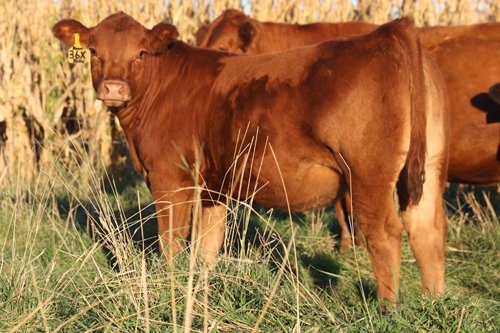5 tips for harvesting high quality silage
Follow these steps to harvest and store high quality silage this fall.
September 6, 2017

For many producers located in the drought areas of the Dakotas and Montana, cutting corn for silage will be the only way to salvage the dry and damaged crop. With harvest time drawing near, there are several considerations to keep in mind. Silage chopping will begin soon, and producers will be busy prepping equipment, lining up harvesting help and creating an environment for a quick and favorable anaerobic fermentation process.
READ: Using drought-stressed corn for silage
In order to achieve a high quality silage that has a pH below 4.5 and a lactic acid content of 65% or greater, producers must chop at the correct moisture content, remove air quickly after chopping and maintain a limited oxygen environment throughout storage, says Rory Lewandowski, Ohio State University Extension educator, who recently wrote an article with tips for managing high quality corn silage. You can read the article in its entirety by clicking here.
1. Harvest at the correct moisture or dry matter (DM) content
Lewandowski says, “A DM range of 30-38% is acceptable. Silage put into a bunker silo should be at the lower end of this range while silage put into upright silos should be at the upper end. Strive for an average of 35% DM.
“Corn less than 27% to 30% DM does not ferment properly. It produces silage that often has high concentrations of butyric acid and will have an unpleasant odor, resulting in reduced animal intake. Corn chopped at higher than 40% DM does not pack well, compromising the fermentation process.
“The result is a silage with low lactic acid concentration, heat damage and mold growth. Starch digestibility is usually low, causing the silage to have less energy. Rapid harvest is essential because corn will gain DM content or lose moisture on average at a rate of 0.5 percentage points per day.”
2. Know the best theoretical length of cut (TLC)
“Chop length and kernel processing affect the packing/air exclusion properties of silage and impact directly upon silage quality,” he writes. “The theoretical length of cut (TLC) for processed corn silage is ¾ inches. Non-processed corn silage should have a TLC of ¼ to ½ inches. If chop length is too coarse, packing is more difficult, and the result is poor fermentation.
“In recent years, kernel processing has become a standard practice when chopping corn because it damages the protective layer of corn kernels, providing better access to the starch for rumen bacteria. Upon examination, correctly processed corn silage will not have any visible whole corn kernels or pieces of cob.”
3. Consider adding an inoculant
“Most high quality silage producers use an inoculant,” says Lewandowski. “There are naturally occurring lactic acid bacteria (desirable) in the green chop coming out of the field. At issue however, are the other naturally occurring bacteria species that compete for the same plant sugars and that produce other acids.
“Adding an inoculant can help to speed up the fermentation process that drives lactic acid production. Regardless of which inoculant product is used, the key is to purchase high quality inoculants and to apply them correctly. Do not use chlorine treated water to rehydrate a bacterial inoculant.”
READ: 6 silage safety tips to remember
4. Remove the air
He adds, “The next critical step is the rapid removal of air by packing the green chop. This creates a favorable anaerobic environment for the lactic acid bacteria. The goal is to achieve a minimum silage density 40-45 pounds of fresh forage per cubit foot, which should provide a density of 15 pounds of DM per cubic foot or higher. Higher packing densities result in less DM loss.
“The guideline for packing is to provide 800 pounds of packing weight for each ton of silage delivered to the silo or pack. For example, if the harvest rate is 100 tons per hour, then the packing weight needed is 100 x 800 = 80,000 pounds or 40 tons. Each packing layer should be no more than 6 inches in thickness. You cannot overdo packing.”
5. Cover silage after final packing
“Covering prevents oxygen, weather and animals from getting into the silage pack, reducing DM and spoilage losses,” he explains. “The recommendation is to cover with plastic of 6 to 8 mil thickness to provide adequate overlap and weigh that plastic down, sealing the edges as well. University research trials have demonstrated that the oxygen barrier 2-step products have reduced losses more than covering with the 6 to 8 mil plastic alone.”
The opinions of Amanda Radke are not necessarily those of beefmagazine.com or Farm Progress.
About the Author(s)
You May Also Like




.png?width=300&auto=webp&quality=80&disable=upscale)
